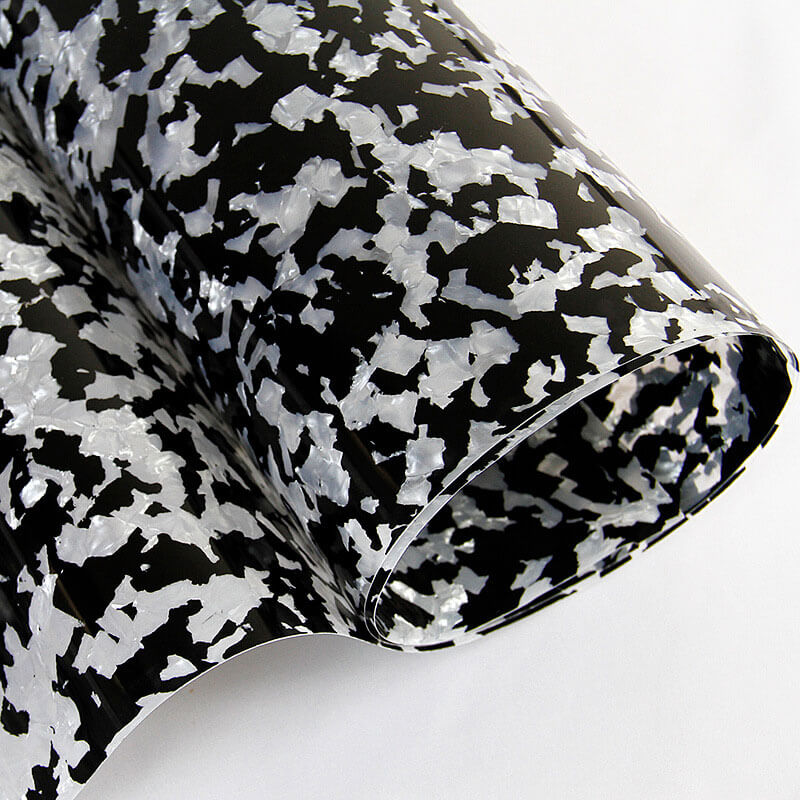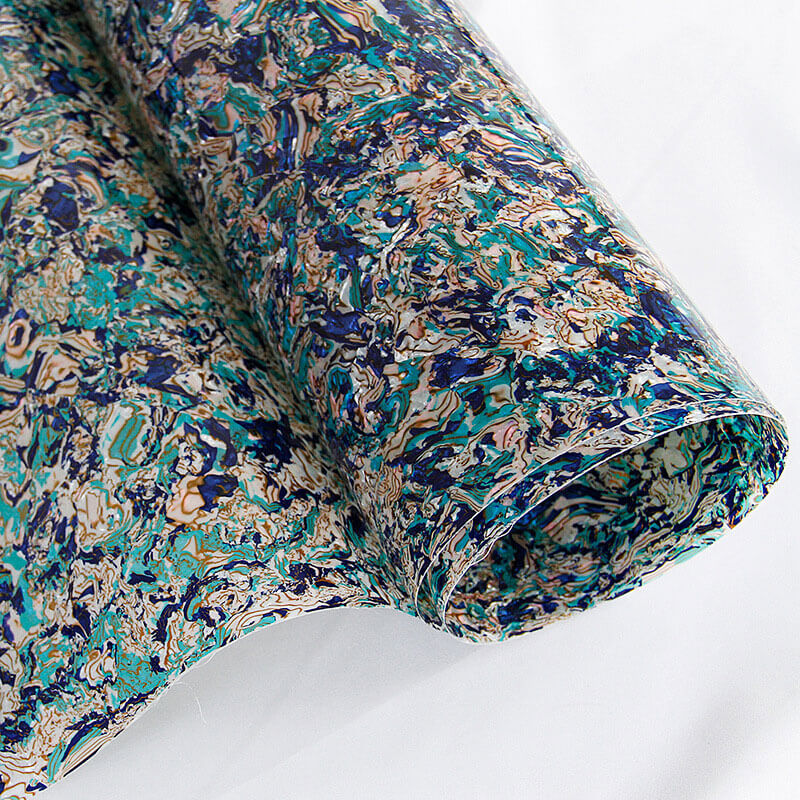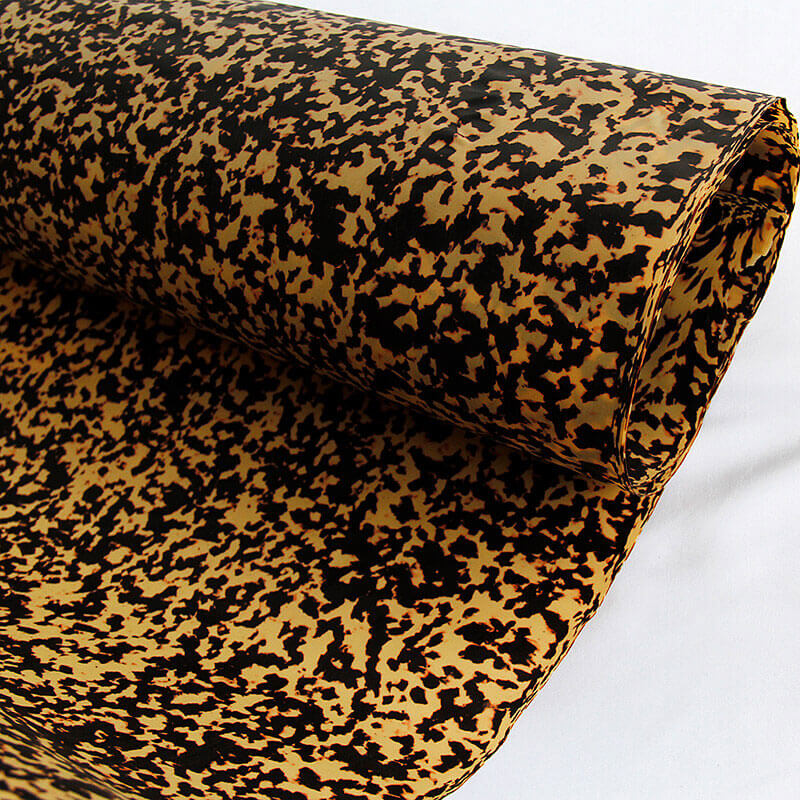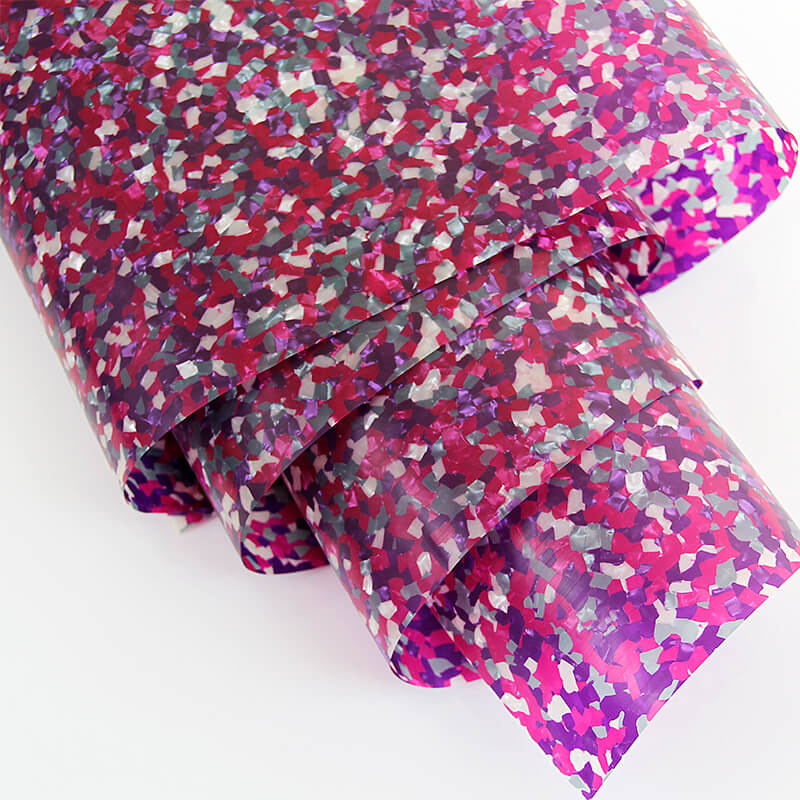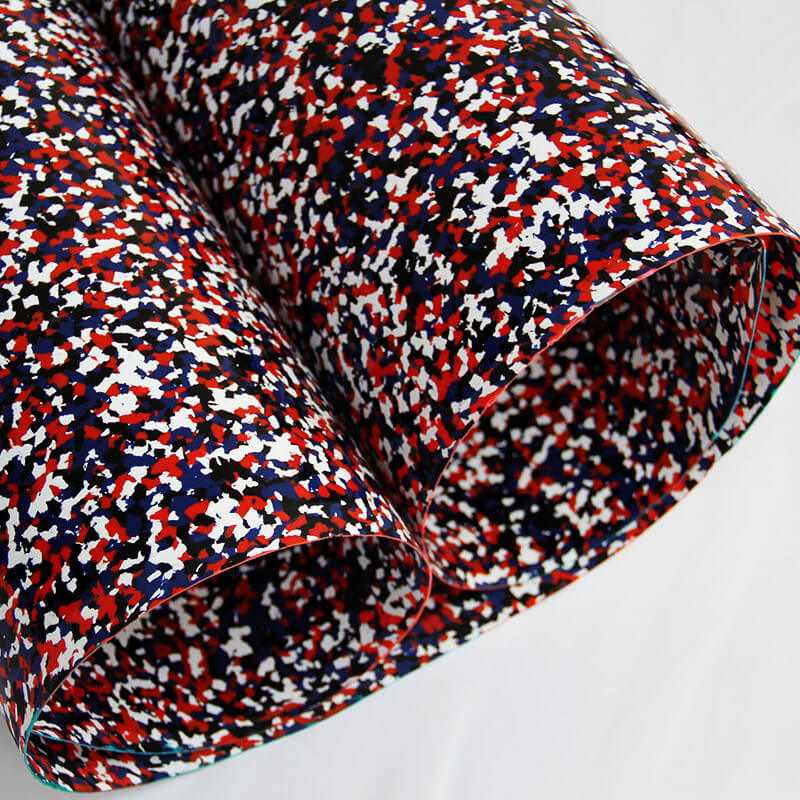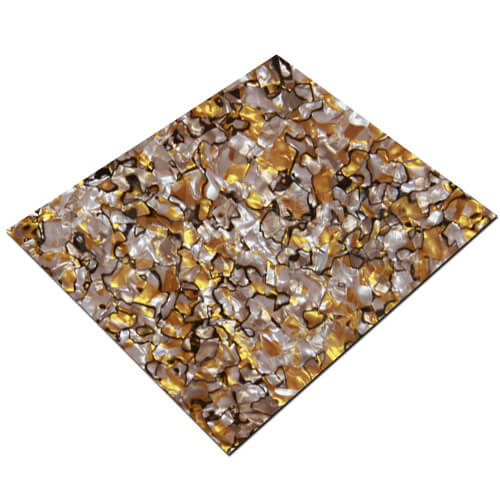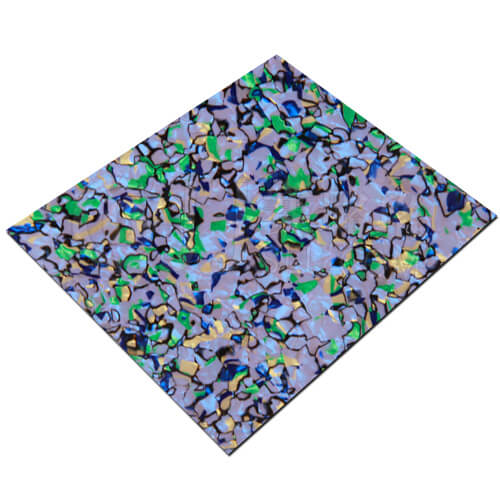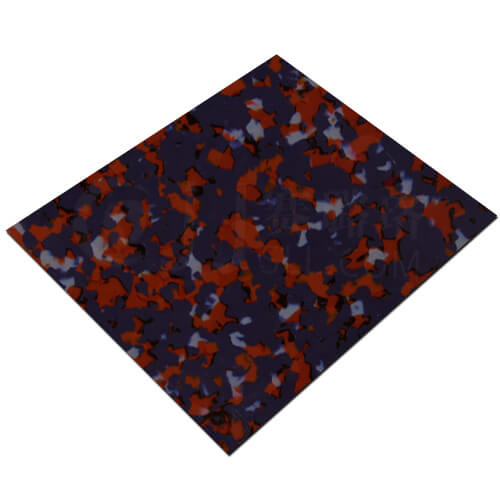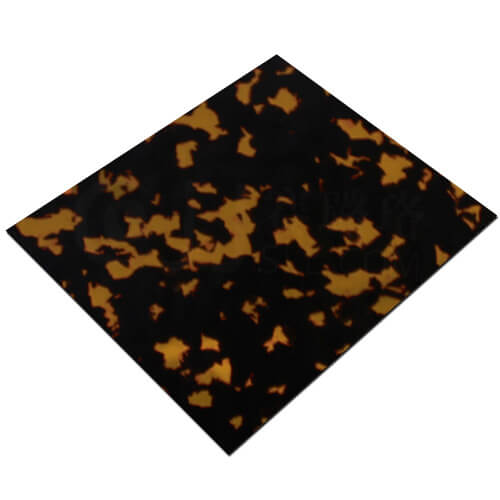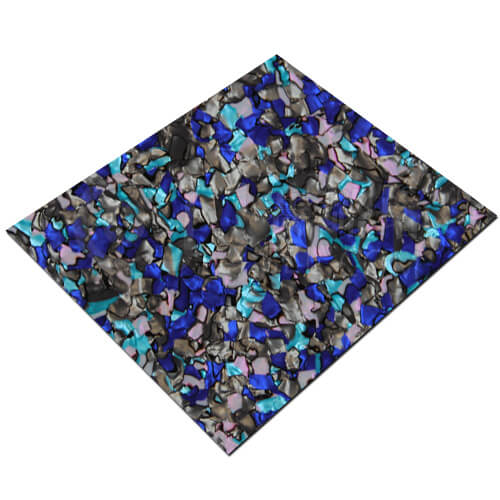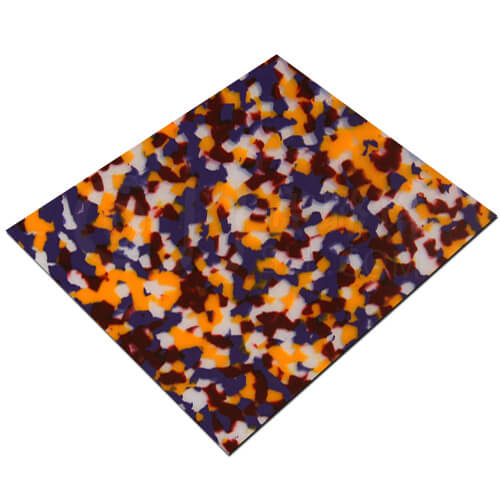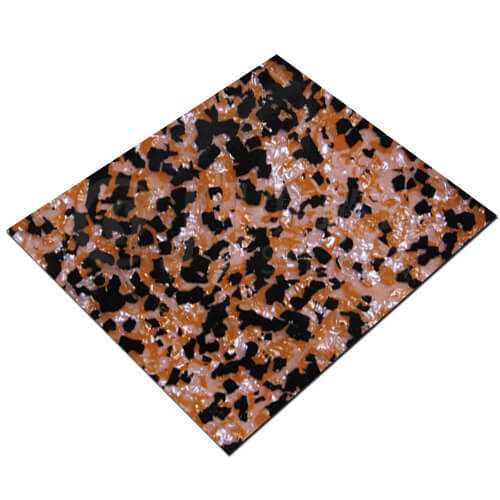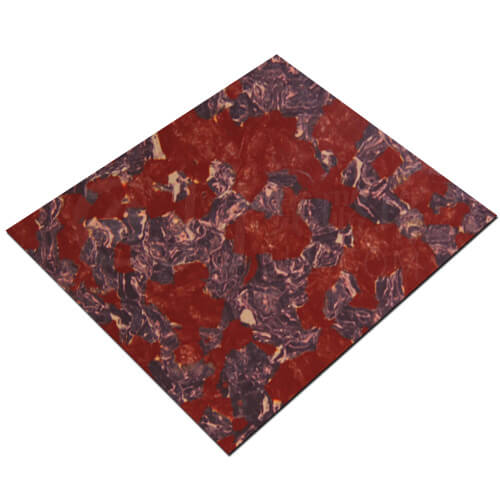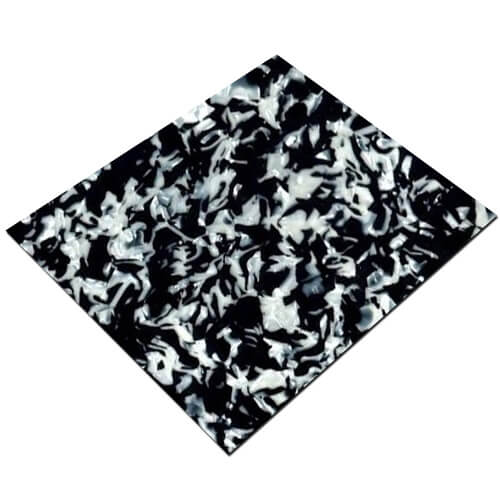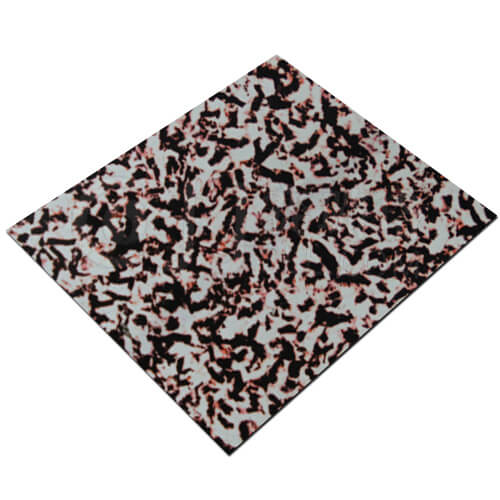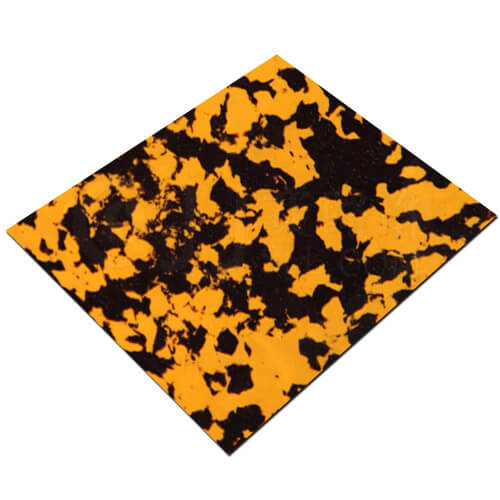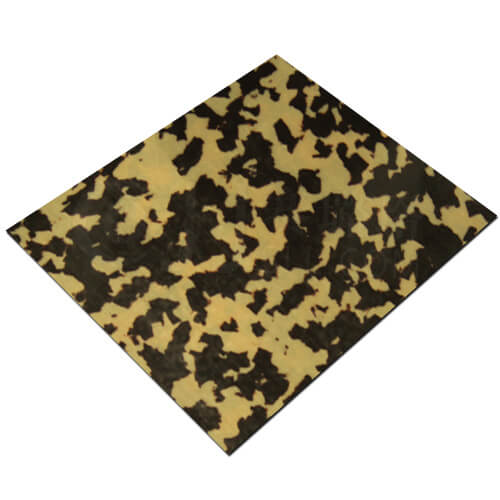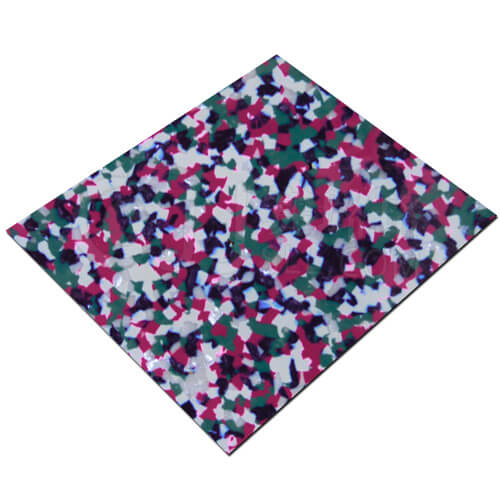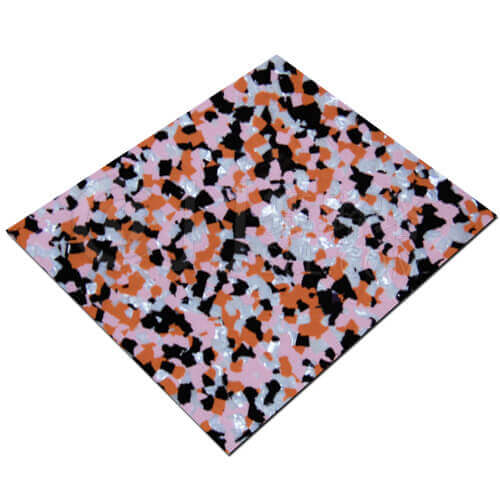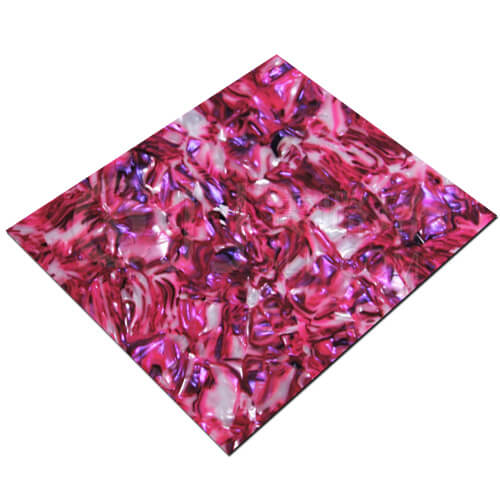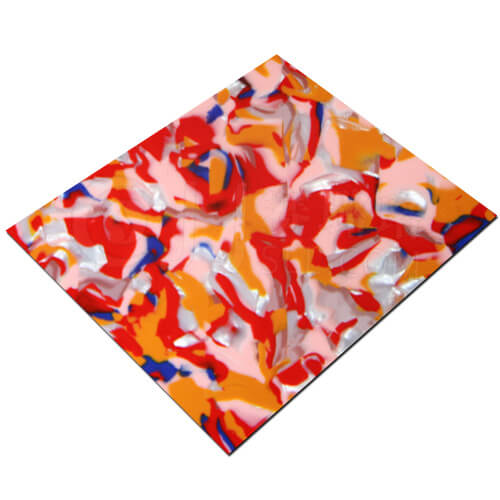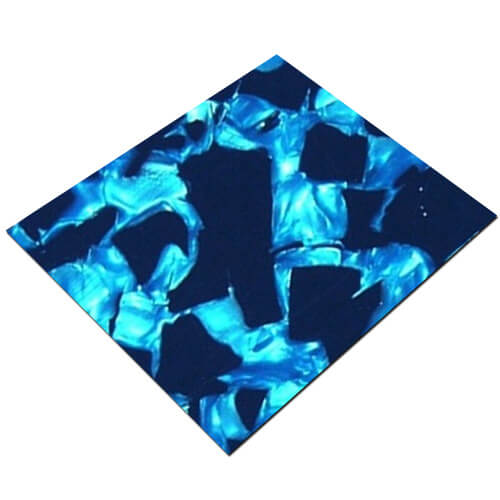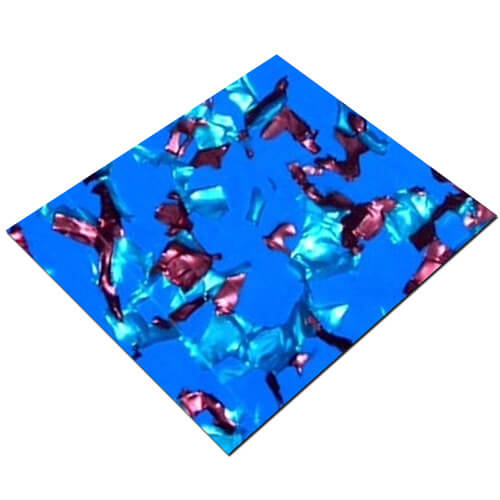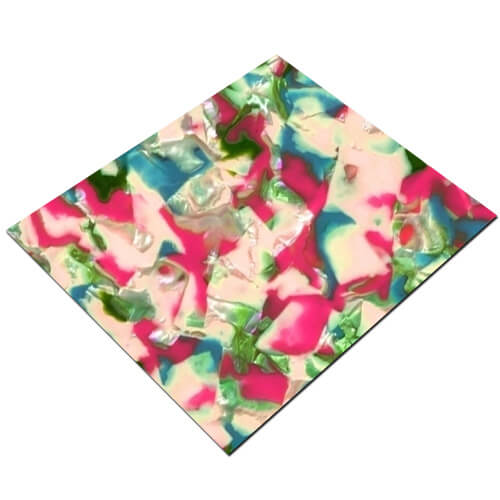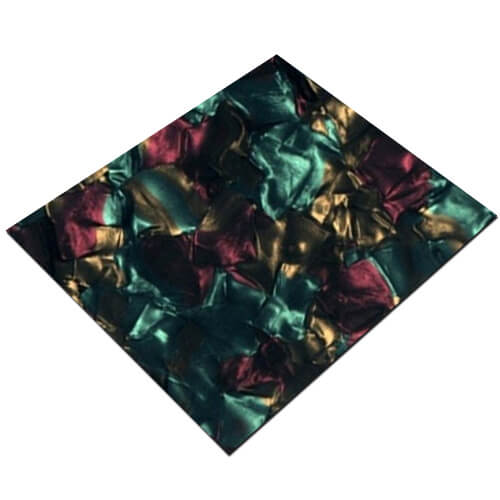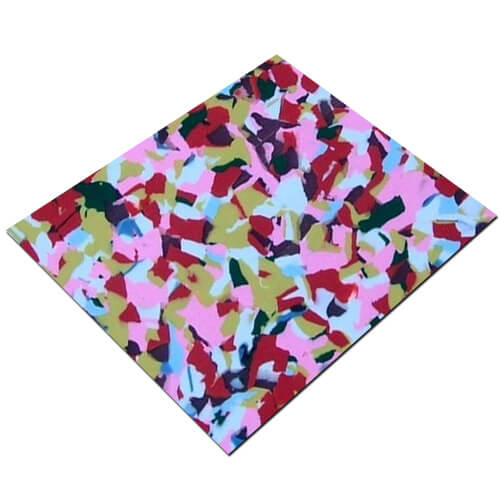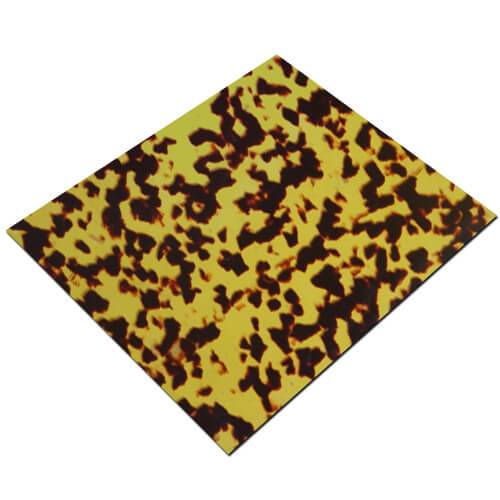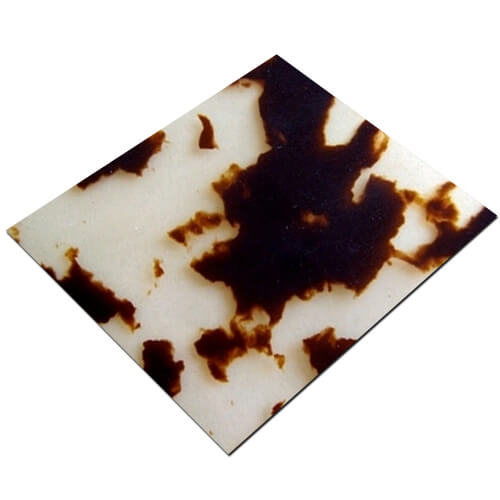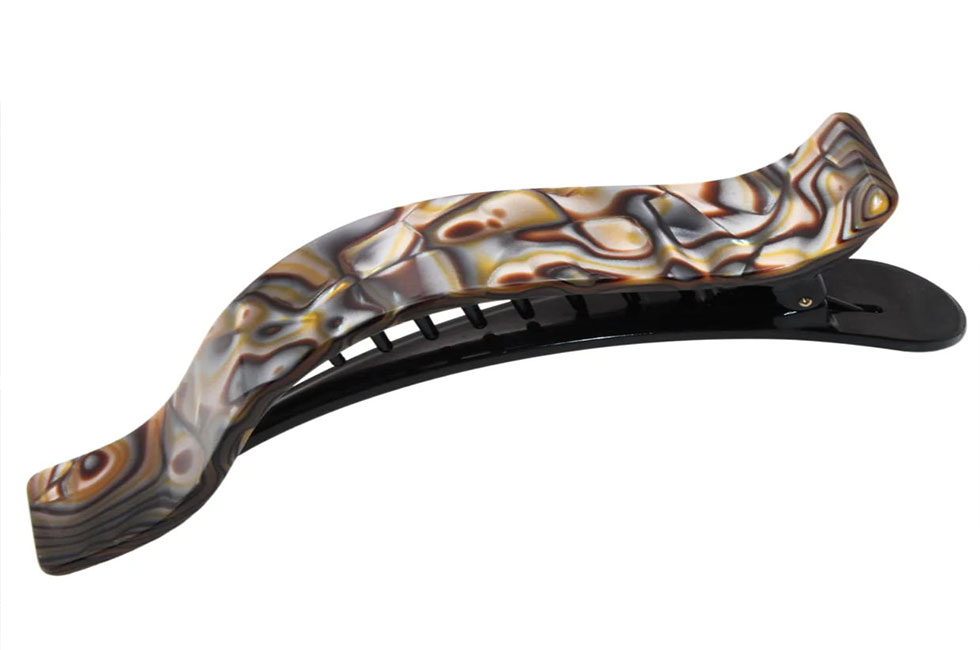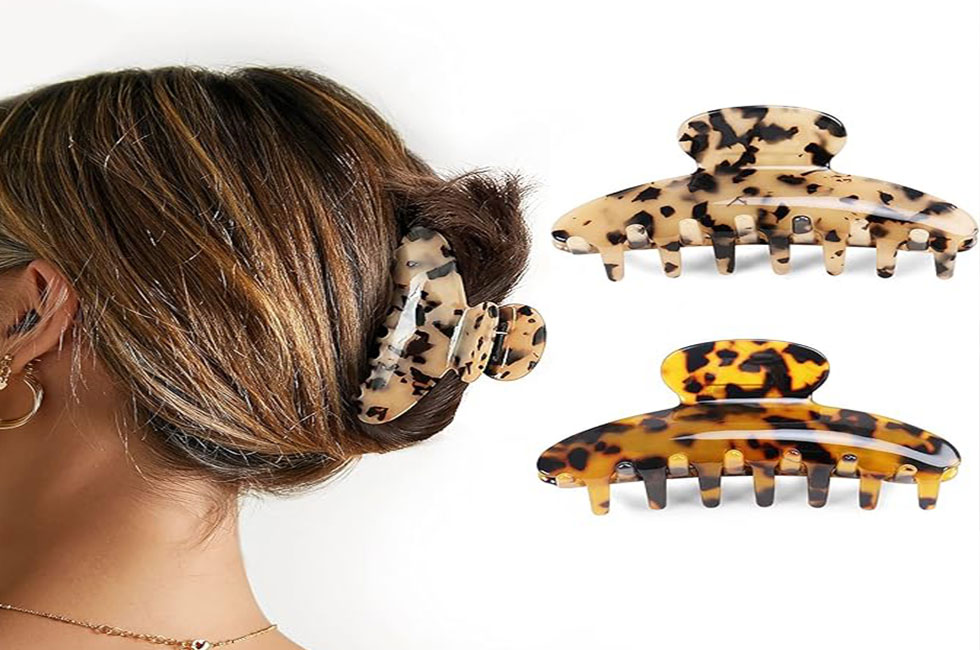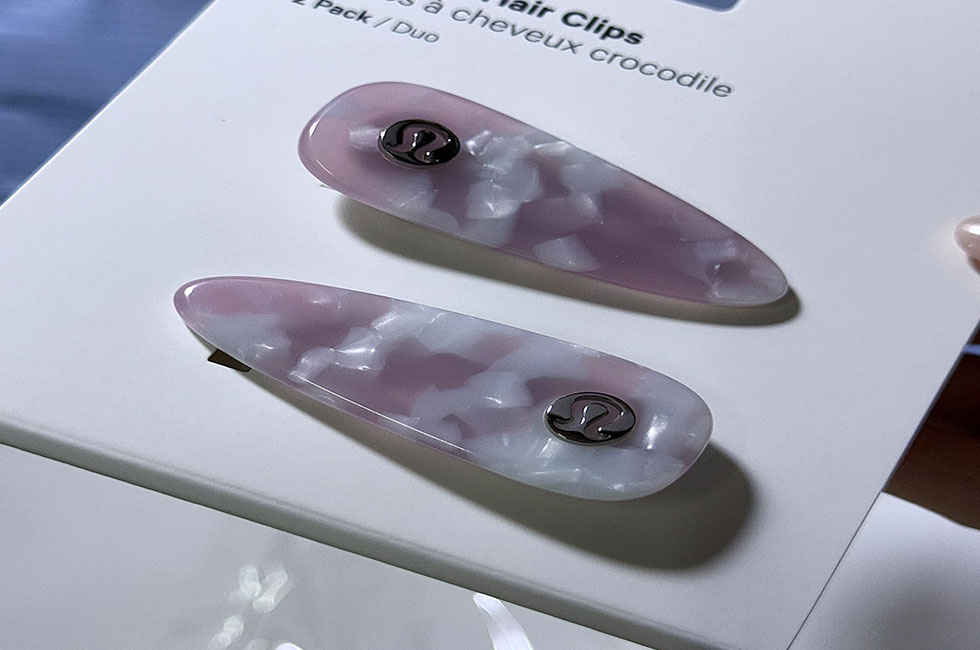Tortoiseshell Floral Celluloid Sheet
What is Tortoiseshell Floral Celluloid Sheet ?
Tortoiseshell floral celluloid sheet is a material with a unique appearance and properties. based on the natural colors and patterns of tortoiseshell, it typically features an irregular floral pattern with alternating shades of brown, pale yellow, and black. these patterns and colors transition naturally, creating a strong three-dimensional effect, as if the tortoiseshell pattern has been replicated on the film. its transparency allows the floral pattern to be displayed, while also creating a unique visual effect through the refraction and reflection of light, making it appear more vivid and lifelike.
Production Process
Raw Material Preparation: Select the appropriate celluloid raw material, choose the appropriate pigments and additives based on the desired color and effect, and mix them in precise proportions.
Mixing: Place the celluloid raw material, pigments, and additives into a kneader and thoroughly mix and agitate them until the pigments and additives are evenly dispersed throughout the celluloid, forming a mixed colloid with a tortoiseshell pattern.
Calendering: The mixed colloid is rolled through a calender to form a sheet film of a desired thickness and width. During the calendering process, the film’s thickness, pattern clarity, and three-dimensional effect can be controlled by adjusting the calender parameters and mold.
Drying: The calendered film is dried to remove moisture and solvents, making the film more stable and further fixing the pattern and color.
Features
- Highly simulated tortoiseshell texture.
- Material and Physical Properties: Celluloid-based.
- Weather Resistance: Resistant to water and dilute acids.
- Moderate thickness.
- Processability: Processable through cutting, heat bending, and gluing
Options
- Custom Sizes: 1600mm x 700mm, 1400mm x 700mm, 1500mm x 900mm, and other sizes are also available upon request.
- Thickness Customization: Thicknesses generally range from 0.17mm to 5.0mm, with different thicknesses suitable for different applications.
- Color and Pattern Customization: Customizable color combinations and floral patterns.
- Surface Texture Customization: Customizable surface textures, such as smooth or slightly matte.
- Shape Customization: Celluloid tortoiseshell floral film can be formed into a variety of shapes through cutting, heat bending, and other processes.
Application
Decorative Applications: It can be used to decorate furniture, doors, windows, and walls, adding a unique retro and artistic feel to any space. It can also be used to create decorative items such as photo frames and ornaments, enhancing the aesthetics and added value of products.
Cultural and Creative Products: It is widely used in stationery, gifts, and other cultural and creative products, such as notebook covers, bookmarks, and postcards, attracting consumers and satisfying their desire for personalization and cultural connotations.
Other Applications: It can also be used to create small household items such as combs, mirrors, and hairpins, giving these products a unique appearance and texture.
Selection Tortoise Floral Celluloid Sheet Series
Main Parameter
Material: Celluloid (Nitrocellulose)
Thickness: 0.17mm to 5.0mm (selectable based on user needs)
Dimensions: 1600 x 700mm, 1400 x 700mm, 1500 x 900mm
Improper handling during production can cause premature aging of celluloid, indirectly reducing its UV resistance. Targeted optimization is necessary:
Controlling processing temperature and time.
High-temperature processes (120-150°C) such as hot pressing and shaping accelerate celluloid oxidation. Simultaneous exposure to natural sunlight can easily lead to premature degradation. Therefore, it is necessary to:
Use UV-filtering glass (filtering over 90% of UV rays) in the processing environment to avoid direct sunlight.
Shorten the high-temperature processing time (for example, reducing the hot pressing time from 30 minutes to 15-20 minutes) and introduce inert gas (nitrogen) during the cooling phase to reduce oxidation.
Post-processing and curing
The formed film is UV-cured: Expose it to low-intensity UV light (365nm wavelength, 50W power) for 2-3 hours to slightly cross-link the material’s molecular chains, forming a more stable structure and improving its resistance to UV aging (experiments have shown this can extend the weathering life by over 30%).
The production process for tortoiseshell floral celluloid film is highly complex. This complexity stems from the unique properties of the material, the fusion of traditional craftsmanship with modern technology, and the stringent requirements for both texture and stability of the pattern. This can be seen in the following key steps:
1. Raw Material Processing: Time-consuming and environmentally sensitive
Celluloid’s primary components are nitrocellulose (10%-12% nitrogen content), camphor (a plasticizer), and dye. The stability of these ingredients directly impacts the quality of the final product, requiring strict control during the processing process:
Raw Material Proportioning and Mixing: Nitrocellulose must first be dissolved in alcohol to form a gel. Then, it must be mixed with camphor (in a ratio of approximately 7:3) at a constant temperature (40-50°C) and stirred for 4-6 hours to ensure uniform blending. A deviation of even 0.5% in the ratio can result in the film being too brittle or too soft.
Natural Aging: The mixed celluloid sheet must be stored in a well-ventilated, light-proof environment at a constant temperature and humidity (20±2°C, 50±5%) for 1-3 years to allow the solvent to evaporate slowly and reduce internal stress. Insufficient aging time can lead to cracking or deformation during subsequent processing.
Impurity Control: Raw materials must be filtered at least three times (with a filter precision of 5-10μm) to prevent residual fibers or particles, which can cause speckled patterns and uneven light transmission.
II. Pattern Forming: A High-Precision Fusion of Handcraft and Technology
The “natural texture” of tortoiseshell floral prints is their core selling point. Simulating and replicating them requires multiple steps and is extremely challenging:
Texture Modeling and Reproduction:
First, a 3D scan of a natural tortoiseshell shell (or a classic specimen) is performed to extract the pattern’s color gradient (dark brown to light yellow), spot distribution (0.1-0.5mm diameter), and irregular grain patterns, creating a digital model.
If hand-painting is used (commonly used for high-end customization), the craftsman uses a specially crafted fine brush (0.05mm tip diameter) dipped in dye and outlined on the celluloid surface according to the model’s proportions. This process takes 8-12 hours per square meter of film, and the pattern density error must be ≤5%. Lamination and Curing:
To achieve the “transparency” of tortoise shell, multiple layers (3-5) of celluloid sheets of different colors are laminated and fused together through heat pressing (temperature 120-150°C, pressure 5-8 MPa). Uneven pressure will blur the pattern, while excessive heat will cause the material to yellow.
Some processes incorporate transparent resin between layers, controlling the thickness (0.1-0.3mm) to enhance the three-dimensional effect. However, the compatibility of the resin with the celluloid requires repeated testing to avoid delamination later.
3. Processing and Molding: Requires Strict Precision and Experience
Cutting and Shaping:
Celluloid is brittle and hard. Cutting requires a high-frequency vibrating blade (amplitude 0.1mm) or a laser cutting tool (power 50-100W) to avoid edge chipping. When making curved products (such as eyeglass frames), the film must first be heated to 80-100°C to soften it before being molded. The cooling rate should be controlled within 5°C/minute to prevent wrinkles.
Surface Treatment:
To simulate the soft luster of tortoiseshell, the film must be polished three to four times: first, remove burrs with 800-grit sandpaper, then polish with a wool wheel (1500 rpm), and finally, finely polish with chromium oxide paste to ensure a surface roughness Ra ≤ 0.02μm. Over-polishing will remove the surface pattern, while under-polishing will result in an uneven gloss.
The custom turnaround time for tortoiseshell floral celluloid film is influenced by the material’s properties and processing technology, typically taking 1-3 months. The specific time depends on factors such as the custom requirements and the manufacturer’s production capacity.
Celluloid material typically needs to air-dry for several years to ensure its stability and minimize deformation. Furthermore, tortoiseshell floral celluloid film is not easily mechanized and is often processed by hand. For simple customization requirements, such as customizing color and pattern within standard sizes and thicknesses, the production turnaround time may be shorter, around 1 month. However, for special sizes, complex patterns, or specialized craftsmanship, it may take 2-3 months or even longer. For example, some handmade celluloid glasses require multiple steps from raw material preparation to finished product, requiring orders at least three months in advance.

